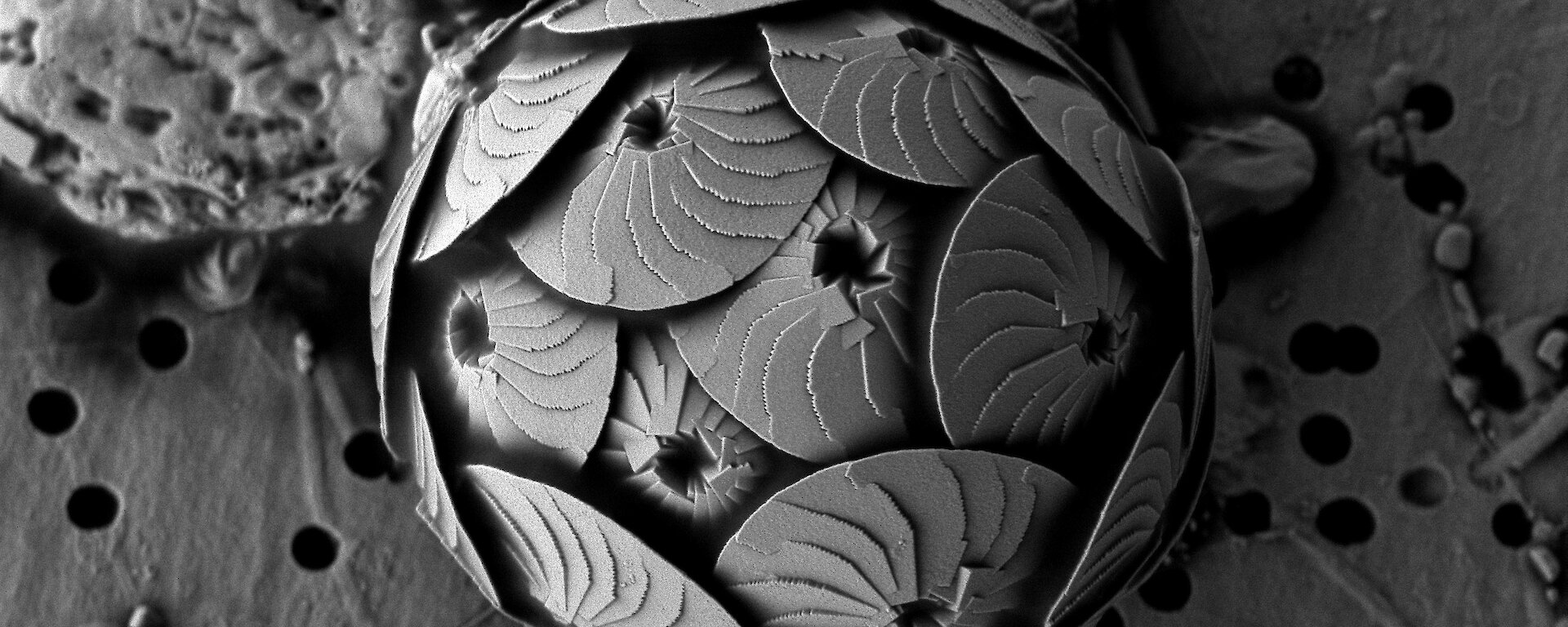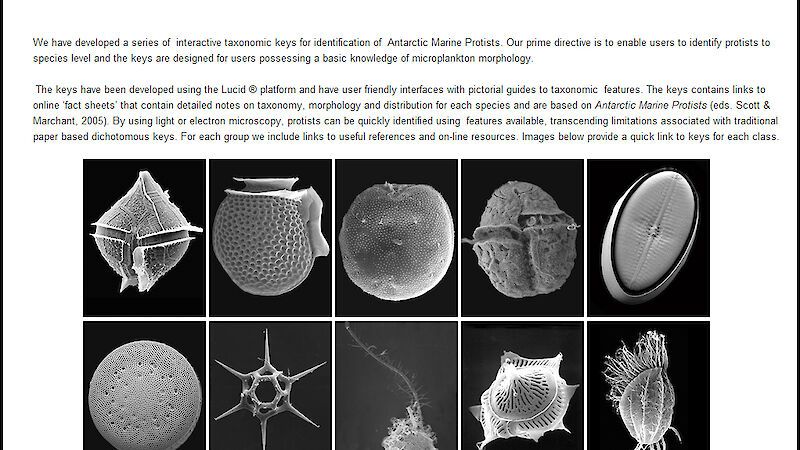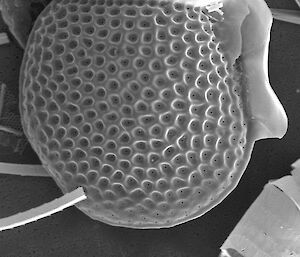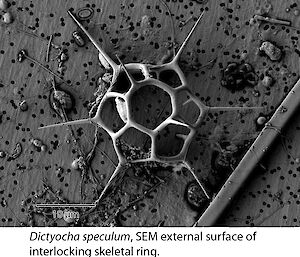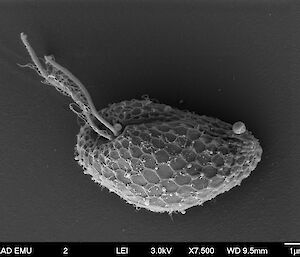An online tool, capturing the intricate structures of hundreds of microscopic Antarctic marine plants and animals, is helping scientists identify these important organisms.
They are works of art on a microscopic scale — perfectly formed, single-celled Antarctic marine plants and animals. Some look like dimpled water jugs, others like cricket balls, roughly woven baskets, or six-pointed stars.
These cells (which together are called ‘protists’) range in size from one micron (one thousandth of a millimetre) to four millimetres in length. Protists sit at the base of the marine food web and their vast numbers support the wealth of life for which Antarctica is renowned.
Climate-related changes in protist community composition and abundance are likely to have far-reaching consequences for Southern Ocean food webs, wildlife conservation and fisheries productivity. As such, correct identification of species is vital.
Now, highly detailed images of more than 600 protist species feature in a collection of interactive identification keys, developed by Australian Antarctic Division scientists Dr Fiona Scott and Dr Imojen Pearce. The keys fill a gap in marine biology and have already attracted both national and international interest.
Protist identification has traditionally relied upon years of specialized training and reference to paper-based dichotomous keys. However, the new online interface allows biologists to quickly match their specimen to an image, or to work through a checklist of physical features based on what they can see in their own sample.
Each species record is linked to a fact sheet that details its distribution, where it was first found and by whom, and its physical attributes. There is also scope to include genetic information about each species in the future.
The information and over 2000 images (electron micrographs, light micrographs and line drawings) used in the keys are mainly sourced from the book Antarctic Marine Protists, published jointly by the Australian Antarctic Division and the Australian Biological Resources Study in 2005. The book synthesises decades of research in the Antarctic and subantarctic regions by Australian and international scientists. The keys also include recent discoveries, taxonomic revisions and hundreds of updated images not contained in the book.
Importantly, the keys can operate from a CD or flash-drive, so that they can be used offline, onboard ships or in the field.

